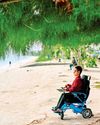
On May 18, 1974, India conducted a Peaceful Nuclear Explosion at Pokhran. Almost a quarter century later, it conducted five nuclear tests of advanced weapon designs, once again at the Pokhran range, catapulting the country into the nuclear club with the ability to weaponise and maintain a nuclear arsenal.
The process of weaponisation and operationalisation was not smooth. Because of the need to maintain secrecy and also because of the long gap between the first and the second tests, the military was kept out of the loop for a long time. Even before the 1998 tests, General K. Sundarji (retd), former Army chief, had written that the "really big secret is that India has no coherent nuclear weapon policy and worse still, she does not have an institutionalised system for analysing and throwing up policy options in this regard".
Despite the obvious disadvantage in keeping the programme outside the military, India had to move fast to operationalise its nuclear deterrent as pressure was building up from various quarters. Post the tests, India faced sanctions and there was pressure to roll back the nuclear programme and sign the CTBT (Comprehensive Nuclear-Test-Ban Treaty). The UN Security Council adopted Resolution 1172 condemning the tests. India stood firm and released its Draft Nuclear Doctrine (DND) in August 1999, showcasing itself as a responsible nuclear power.
Esta historia es de la edición June 09, 2024 de THE WEEK India.
Comience su prueba gratuita de Magzter GOLD de 7 días para acceder a miles de historias premium seleccionadas y a más de 9,000 revistas y periódicos.
Ya eres suscriptor ? Conectar
Esta historia es de la edición June 09, 2024 de THE WEEK India.
Comience su prueba gratuita de Magzter GOLD de 7 días para acceder a miles de historias premium seleccionadas y a más de 9,000 revistas y periódicos.
Ya eres suscriptor? Conectar

Walking in pine forest can have the same effect as a prescription drug
INTERVIEW - KATHY WILLIS, professor of biodiversity, the University of Oxford, and author, Good Nature

MORE THAN A HELPING HAND
Maria Victoria Juan spent a lifetime healing wounded soldiers, and she can't think of anything she could have done better

Against all odds
Mohamed Raishan Ahmed was born with spinal muscular atrophy, which made him unable to sit, stand or walk. Recently, the Maldivian underwent a rare, complex surgery in India that now allows him to sit upright. At 23, the fact that he is alive is in itself an achievement. But he has gone beyond mere survival-with a pursuit of excellence

A pacemaker tale
From science fiction to reality, with a touch of southern Indian wisdom

Driving safe
Taxi drivers endure gruelling hours, cramped seats and relentless traffic, making them prime candidates for health issues like back pain, hypertension, diabetes and insomnia.

Good food, good life
From the moment of birth, we establish a relationship with food—a nourishing link that requires care and attention to stay healthy

POOR SLEEP IN MIDLIFE COULD AGE YOUR BRAIN FASTER
PEOPLE WHO EXPERIENCE SLEEP ISSUES, such as difficulty falling asleep or staying asleep in their 40s, may show more signs of brain ageing in late midlife. Poor sleep may accelerate brain atrophy that is associated with dementia.

BRAIN SCANS SHOW MINDFULNESS MEDITATION CAN REDUCE PAIN
CAN MINDFULNESS MEDITATION actually relieve pain, or is it just a placebo effect?

NON-SURGICAL OPTION TO EASE KNEE ARTHRITIS
A NEW, MINIMALLY INVASIVE procedure called genicular artery embolisation (GAE) can effectively reduce pain, improve quality of life and reduce progression of the disease and the need for knee replacement surgery in people with knee osteoarthritis.

EARLY ONSET DIABETES, BELLY FAT LINKED TO DEMENTIA
FACTORS SUCH AS DIABETES and belly fat in midlife can put you at risk of dementia and Alzheimer's disease later in life.